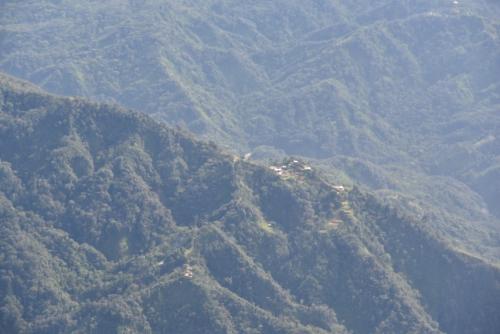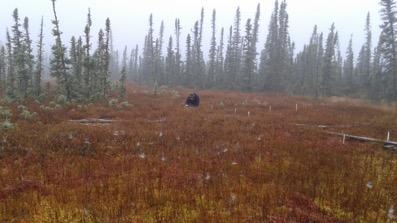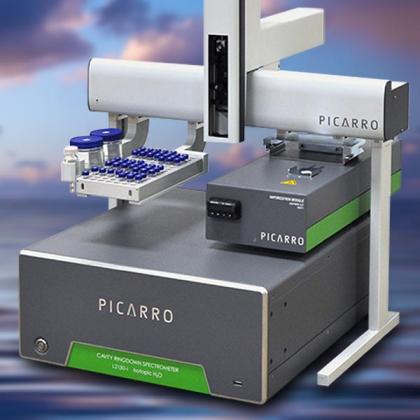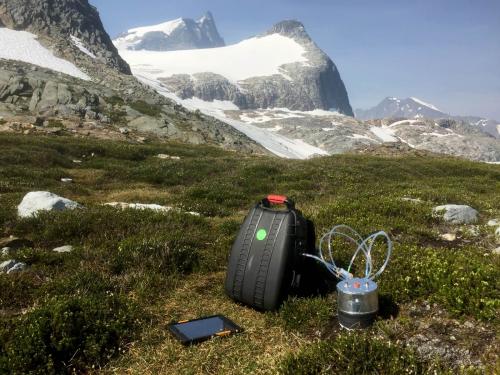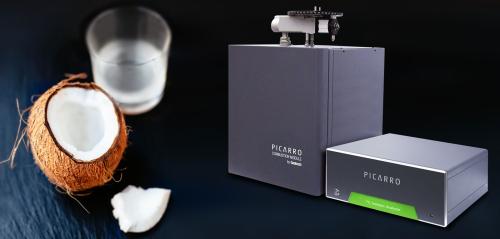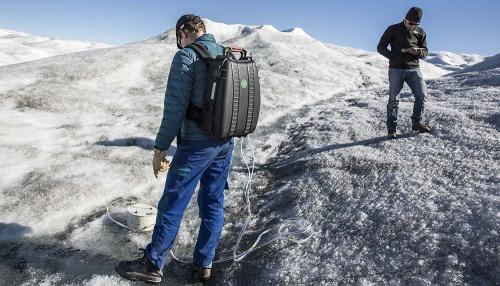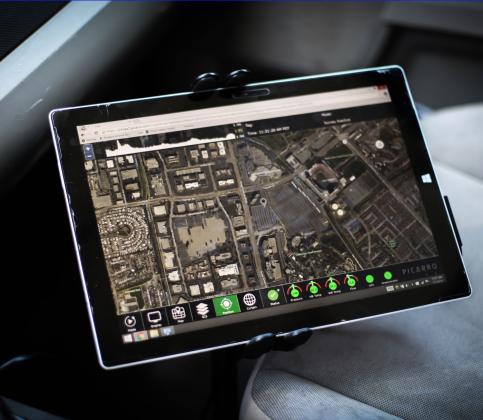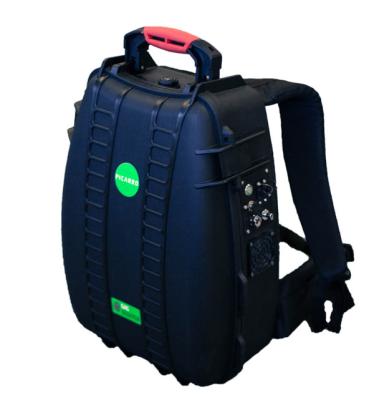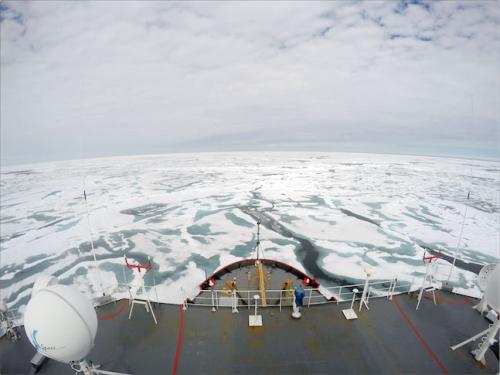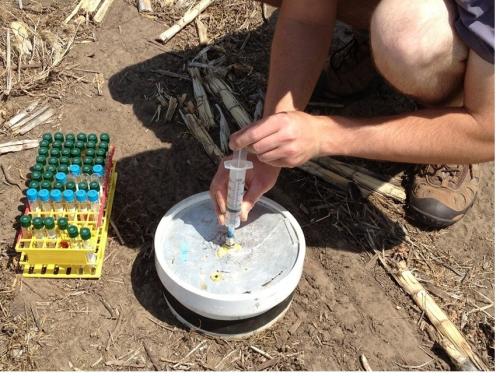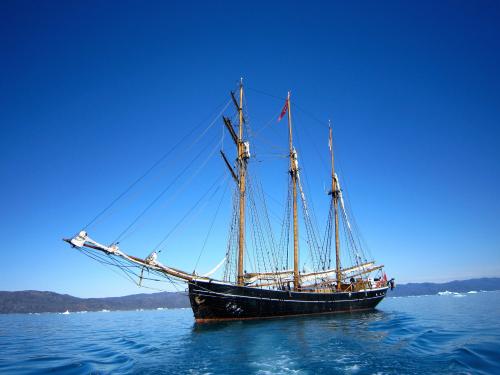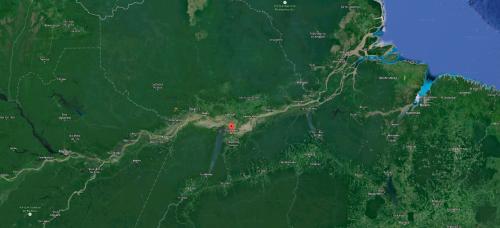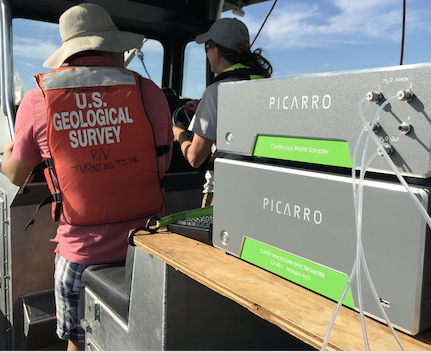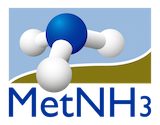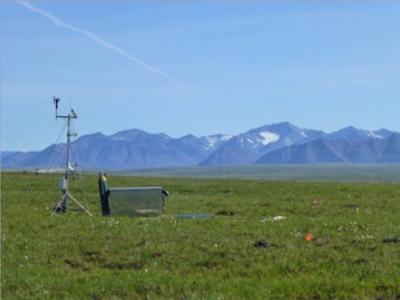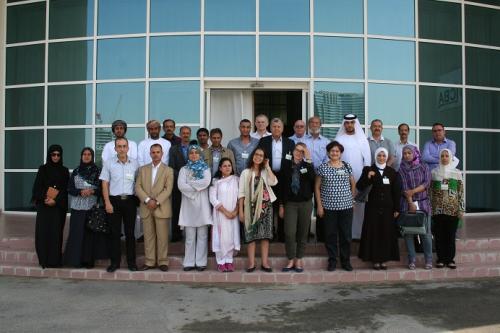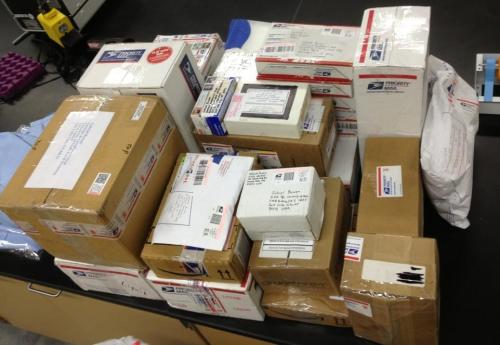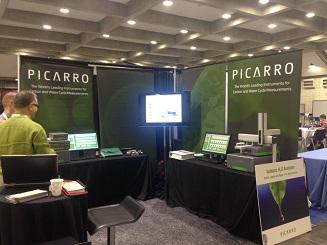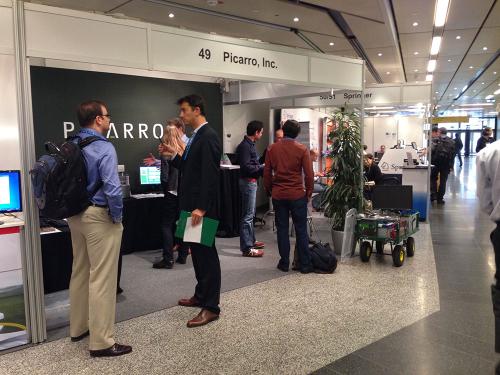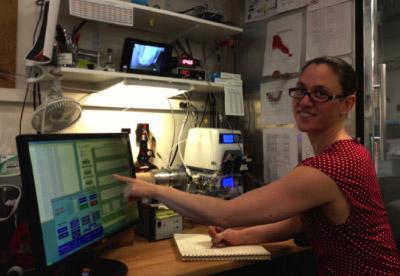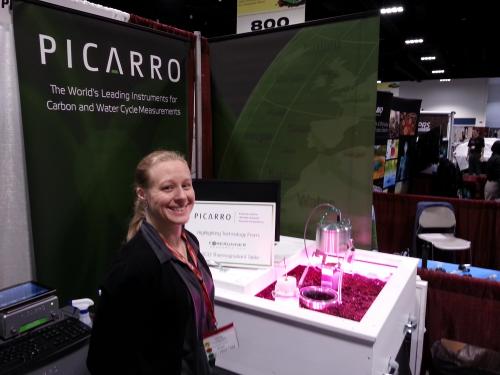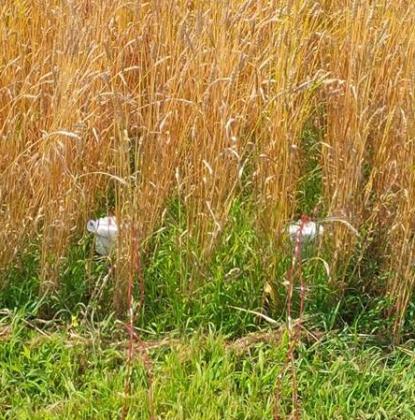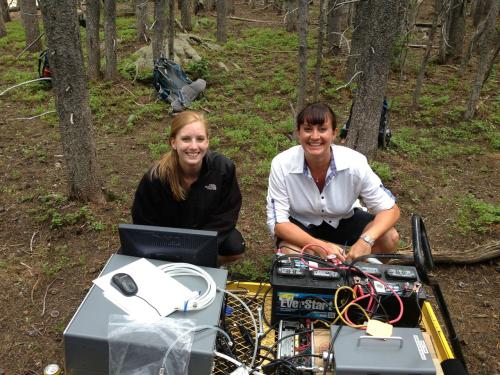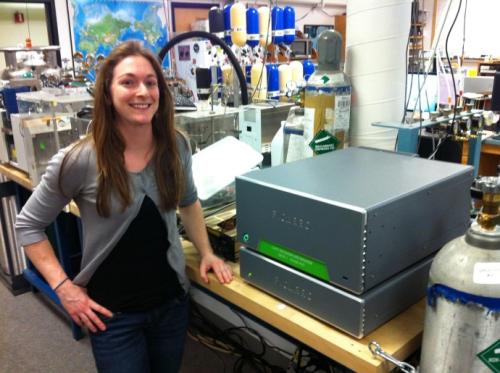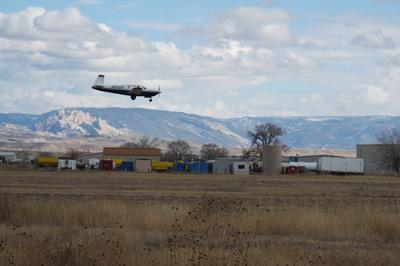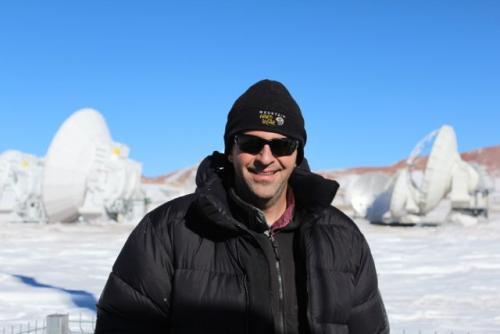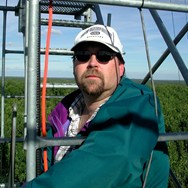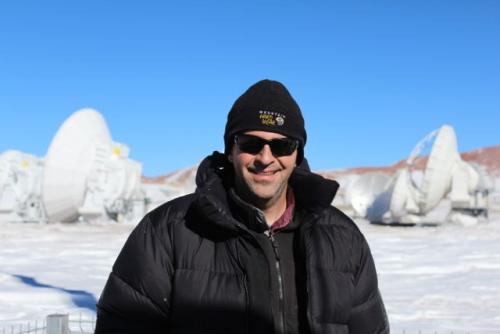- 3105 Patrick Henry Dr. Santa Clara, CA 95054 USA
- +1 408 962 3900
- info@picarro.com
- Careers
- BlogThere are not many countries in the world left where you can truly say that they are blessed with intact native tropical forests. Of course we all know about the Amazon, but if we have a closer look it becomes clear that even the ‘Green hell’ as the Amazon basin has been labelled, is heavily affected by humans.
A complete solution for greenhouse gas flux measurements using Picarro and Eosense
BlogIn the following video series of 6 episodes, Eosense walks us through the pairing process using a G2508 five species, gas concentration analyzer with their eosAC soil flux chamber and gives a demonstration on how to process, analyze and export the data using their software.Identifying the fingerprint of oceanic evaporation from sea surface observations between the North Pole and the coasts of Antarctica
BlogThe following study takes us through the voyage of the Polarstern ice breaker of the Alfred Wegener Institute in Germany.Detecting and quantifying methane emission sources at the Oktoberfest in Munich
BlogWhen people speak about the Oktoberfest in Munich, it is most likely about beer, roasted chickens and the typical Bavarian lederhosen. But due to the huge area involved and the large number of visitors, it is also obvious that there will be some amount of greenhouse gas emissions.Quantifying carbon dioxide and methane efflux in the Mekong Delta in Cambodia and Vietnam
BlogAt Picarro, we enjoy hearing how research groups are using our systems in their projects. Christopher Hackney and Daniel Parsons from the University of Hull (UK) are working on a series of UK Research Council and Newton Fund funded projects(e.g. http://www.stelar-s2s.org) with partners from the Universities of Southampton, Exeter (UK), Illinois (USA) and Can Tho (Vietnam) and the Southern Institute of Water Resources Research (Vietnam)on the Mekong Delta in SE Asia.
O2, CO2, and Chlorophyll Walk into a Leaf...
BlogAs the research and development of renewable energy sources increases in momentum, it was great to have the opportunity to participate in the First European Photosynthesis Congress held at the Swedish University of Agricultural Sciences in Uppsala, Sweden.
VHP of just 30 ppb can oxidize and ruin pharmaceuticals
BlogAs biologics have supplanted small molecules as the dominant focus for many leading pharmaceutical companies, robust manufacturing processes for isolators and RABS continues to be an evolving process. In this environment, as the need for significantly better VHP monitoring has grown quickly, Picarro H2O2 analyzers have increased in popularity.
Monitoring isotopic composition (δ18O, δD) of water vapor, precipitation and snow surface in the Antarctic region.
BlogAnna Kozachek of the Arctic and Antarctic Research Institute (AARI), Saint Petersburg has taken time to write a description of her team’s use of the Picarro L2130-i and L2120-i during the Antarctic Circumnavigation Expedition (ACE) project. The main goal of the expedition was to circumnavigate Antarctica, performing oceanographic and meteorological observations along the route as well as terrestrial observations on the sub-Antarctic and Antarctic islands. Learn more about their setup and overall findings.
Investigating Experimental Priming Effects in Anaerobic Decomposition of Peats from Discontinuous Permafrost in Canada
BlogAccelerated rates of warming and wildfires in northern regions of Canada will result in an extensive thaw of permafrost peatlands and peat plateaus. This could result in the potential release of greenhouse gases to the atmosphere. The Department of Renewable Resources at the University of Alberta, Canada have taken time to explain how they are using the Picarro G2201-I analyzer and Small Sample Introduction Module (SSIM) to further investigate if substrate addition “primes” peat decomposition.
Measuring Small Volume Gas Concentrations with the Small Sample Introduction Module
BlogThe Picarro Small Sample Introduction Module (SSIM) is designed for processing small volumes of gas samples through a Picarro analyzer. Through a minor modification, we can now expand the functionality of the SSIM so that more accurate concentration measurements can be performed on both isotopic and concentration analyzers.
Please Attend Our Presentations at EGU 2018
BlogIf you are attending the 2018 EGU General Assembly from April 9 to 13 in Vienna, Austria, we hope you’ll attend Picarro-authored oral and poster presentations. Following is a list of the presentations with day, date and times, location, title, and authors:
Oral Presentation
EGU2018-11101Fri, 13 Apr, 16:30, Room 0.88
Quantification of atmospheric for formaldehyde by near-infrared cavity ring-down spectroscopy
Chris Rella et al.Optimize the Precision and Accuracy of Seawater and High-Saline Water Stable Isotope Measurements
BlogThis is the third, and final, post in a three-part series that examines how Picarro analyzers, systems, and accessories ensure precise, accurate measurements of challenging seawater and high-saline water samples. The first post, Water Stable Isotope Measurements of Seawater, presents results from an inter-laboratory study designed to evaluate the quality of cavity ring-down spectroscopy (CRDS) derived measurements compared with the consistency and values of isotope ratio mass spectrometry (IRMS) measurements.
Please Join Us at EGU 2018
BlogIf you are attending the 2018 EGU General Assembly from April 9 to 13 in Vienna, Austria, we hope you’ll stop by Picarro booth 28 and spend some time with Picarro team members. We welcome an opportunity to meet you and learn more about your ongoing research programs. And we’ll have Picarro isotope and gas concentration analyzers on display that may be of interest to you, including...
Stable Isotope Analysis of High-Saline Water
BlogThis is the second post in a three-part series that examines how Picarro analyzers, systems, and accessories ensure precise, accurate measurements of challenging seawater and high-saline water samples.
Water Stable Isotope Measurements of Seawater
BlogWe developed our water stable isotope analyzers, system peripherals, and accessories to give research scientists a less-expensive, easier-to-use solution for precise, accurate isotopic measurements. They’ve been used successfully in freshwater research for over a decade. More recently, scientists have tested our analyzers and systems, and we’ve continued to develop accessories to ensure precise, accurate measurements of more demanding seawater and high-saline water samples. This is the first of a three-part series that examines...
Measuring soil carbon fluxes in a remote North American temperate mountain ecosystem
Blog
At Picarro, we often write about our products and applications. But we much prefer to read how our customers are using them in their research projects. Cole Brachmann, Guillermo Hernandez Ramirez, and David Hik with the Departments of Biological Sciences and Renewable Resources at the University of Alberta, Edmonton, have taken time to pen a description of their summer soil flux study. Thanks to all three for sharing their experience.
Picarro Introduces an Oxygen Gas Concentration and Isotope Analyzer
BlogWe've just introduced the Picarro G2207-i gas concentration and isotope analyzer for atmospheric applications including oxygen monitoring to identify the biogeochemical process involved in the carbon cycle. The analyzer combines high precision and low drift O2 concentration measurement with δ18O analysis in ambient air.
Introducing the Picarro PI2114 Hydrogen Peroxide Analyzer
BlogWe've just introduced the new Picarro PI2114 hydrogen peroxide gas concentration analyzer for GMP pharmaceutical manufacturing. You can learn more about it and download a data sheet at www.picarro.com/pharma. Here's a short description about the applications it addresses and the benefits and advantages of using it.
Guarantee the Purity of Organic Coconut Water with a Picarro CM-CRDS System
BlogThe production, sale, and distribution of coconut water is a multibillion-dollar global industry. Given the increase in preference and consumption of pure ‘organic' coconut water, producers are challenged to ensure product purity and maintain customer confidence. This demands an absolute method for producers to distinguish between ‘pure' coconut water, without added sugar, and ‘adulterated' water, with added sugar. The Picarro Combustion Module Cavity Ring-Down Spectroscopy (CM-CRDS) System is a low-cost, easy-to-use, accurate, and precise solution to identify the addition of C4 sugars (
The Picarro GasScouter™ Mobile Analyzer goes to the ends of the Earth
BlogWe introduced the Picarro GasScouter™ mobile gas concentration analyzer to make it easier for scientists to perform high-precision measurements of carbon dioxide (CO2) and methane (CH4) in the world’s most challenging, remote environments. And scientists at the University of Copenhagen are seizing the opportunity to use the new-generation, light-weight, portable, battery-powered cavity ring-down spectroscopy (CRDS) gas concentration analyzer at both ends of the Earth.
Picarro technology helps PG&E survey 5200 gas lines in Yolo County
BlogPicarro's partnership with PG&E continues to make headlines. Using Picarro technology, PG&E is able to perform a precision survey and maintenance operation on 5200 gas lines in Yolo county that would normally take four months in only two weeks.
Article: Gas leak survey set this week in Davis (The Davis Enterprise, 1/4/16)
Running your Picarro GasScouter and eosAC Off-Grid
BlogAuthor: Nick Nickerson, Eosense
Gas analyzers have become increasingly more precise over the past 10 years with the adoption of laser-based sources and ultra-long path length optical cells. However, usually this has been at the cost of power consumption, making them difficult to easily deploy in the field, especially off-grid.
Video: Advanced Technology Spots Gas Leaks
BlogIf you saw one rolling through the neighborhood, you might mistake it for a Google maps car, but for more than a year and a half, PG&E has been cruising for gas leaks, using Ford Explorers that are actually super-sensitive, gas detection vehicles. (KGO-TV)
Arctic Water and Carbon Isotope Cycles from the USCG Icebreaker Healy: Chukchi Sea, Alaska July 2016
BlogThe hydrologic and carbon cycles in the Arctic are currently changing in conjunction with climatic transitions. This includes changes in sea ice extent and thickness, Arctic Ocean pH, and patterns of primary productivity and food web dynamics. Additionally, sea ice related changes in evaporation processes are influencing winter and summer precipitation regimes and broader scale climatic patterns. For example, Arctic vortex shifts allow more Arctic air to reach lower latitudes, which can result in more frequent extreme weather events in the northeast United States.
A Wonderful Video Introduction to Stable Isotope Analysis for Food Safety
BlogConcerns about food safety and food origins are increasing around the world as our understanding of the potential health risks of adulterated food grows and consumers become aware of the risks of fraudulent food products that have been diluted with lower quality substitutes. Picarro's technology is at the forefront of the fight against food adulteration. Our isotopic analyzers allow scientists and regulators to analyze food ingredients to determine whether the food is genuine and came from where its label says it came from.
Extending minimum detectable flux to high-frequency measurements (Part 3)
Blogby Dr. Nick Nickerson, EosenseThis is part 3 of a three-part series. Part 1, Evaluating Gas Emission Measurements Using Minimum Detectable Flux and part 2, Overview of Minimum Detectable Flux, are also available.
Overview of Minimum Detectable Flux (Part 2)
Blogby Dr. Nick Nickerson, EosenseThis is part 2 of a three-part series. Part one, Evaluating Gas Emission Measurements Using Minimum Detectable Flux, is also available.
Evaluating Gas Emission Measurements Using Minimum Detectable Flux (Part 1)
BlogAuthor: Dr. Nick Nickerson, Eosense
Photo: Brett SattazahnWhen water vapor isotope observations meet an old schooner
Blogby Hans Christian Steen-Larsen (hanschr at gfy.ku.dk), Anne-Katrine Faber, and Malte Winther, Centre for Ice and Climate, University of Copenhagen.
Mirage on the Amazon
BlogThis story starts more than 20 years ago when Professor Jeffrey Richey’s research group started to consider the importance of the tropics, and particularly, the Amazon basin, to the global carbon cycle.A trip on the Sacramento-San Joaquin River Delta with USGS
BlogAfter introducing our local collaborator, Carol Kendall from the U.S. Geological Survey (USGS) in Menlo Park, to the concept of the CWS, she cooked up a great plan for us to join Brian Bergamaschi and Bryan Downing from the USGS California Water Science Center in Sacramento on one of their upcoming delta mapping trips.
Delta Cruise Part I
Leading the way in ammonia measurement technologies for compliance with regulated emissions ceilings
BlogAcross the globe ammonia emissions are on the rise. Emissions inventories, and limited networks of ambient air measurements, suggest the rise is predominantly due to intensive farming practices and the increased use of nitrogen-based fertilizers.
Visiting the IAEA for a field demonstration of soil flux measurements for fertilizer optimization
BlogBy Renato Winkler, Picarro Application Scientist -- Some weeks ago, I was invited to join and assist an International Atomic Energy Agency Regional Training Course on nitrogen management.
Powered By PV - The Welker Lab
BlogProfessor Jeff Welker, Dr. Eric Klein and their research group from the University of Alaska Anchorage partnered with Polar Field Services to power their Picarro with PV cells.Using stable isotopes of water for water use efficiency in agriculture
BlogI just returned from a week-long trip to Dubai where I was fortunate to participate in and help lead an International Atomic Energy Agency Regional Training Course on “Separating evapotranspiration (ET) into evaporation (E) and transpiration (T) using isotopic and conventional techniques”. The five day technical course gathered about 15 scientists from across the Middle East region to learn about the importance of understand water use efficiency in agriculture, and in particular how to use stable isotopes of water to partition water loss from crops into “good” water loss (
Are you concerned with the Adulteration of Honey?
BlogAre you aware that more and more honey suppliers and distributors are using stable isotopes to certify their products are free from adulteration? In addition, Customs and Border Protection agencies around the world regularly test for adulteration in imported honey products. Your customers will soon demand this information from you, or they will be forced to choose other suppliers.
Crowd-sourced isotope study of Superstorm Sandy
BlogBy Guest Bloggers Stephen Good and Gabe Bowen:
Well, we’re approaching the two-year anniversary of Hurricane Sandy, and we figured it would be a good time to reminisce about that intensive sample storm that swirled through our Utah lab after the floodwaters of Sandy subsided in New Jersey…
Goldschmidt 2014 and ASITA keep us busy for the month of June!
BlogIn early June we made the short trip from Picarro’s Headquarters in Silicon Valley to Sacramento and Davis for Goldschmidt 2014 and ASITA. Although pretty different conferences, we had a great time at both and had some excellent conversations with globally-recognized isotope geochemists, newcomers to the field, avid Picarro users and those just getting into the game.
Highlights from EGU 2014
Blog.all-attached-images { display: none; }We had a great time at EGU 2014 in Vienna, Austria! We enjoyed meeting everyone and learning more about the great research taking place across water, air and soil applications. We were excited to see the interest in our demos and look forward to sharing our analyzers in action at future events. Our Tech Talk turnout was amazing and we hope you enjoyed the poster sessions featuring Picarro instruments.
Valerie Morris, Bruce Vaughn and the INSTAAR Stable Isotope Lab Team
BlogIt's time for a celebration at the Institute of Arctic and Alpine Research (INSTAAR) Stable Isotope Lab (SIL). Valerie Morris, Bruce Vaughn and the SIL team have reached the top of the WAIS Divide Ice Core! Using a custom-built continuous flow melt system coupled to a Picarro L2130-i, the SIL team has completed stable isotope analysis of the West Antarctic Ice Sheet Divide 06 A core. This is the first top-to-bottom continuous ultra-high resolution isotopic record from a polar ice core.
USGS/CUAHSI Virtual Workshop on Laser Spectroscopy
BlogThe Consortium of Universities for the Advancement of Hydrologic Science, Inc. (CUAHSI), in partnership with USGS, recently hosted a Virtual Workshop on Laser Specs for Field Hydrology and Biogeochemistry: Lessons Learned and Future Prospects. I was invited to present on Picarro and Cavity Ring Down Spectroscopy as applied to hydrology and biogeosciences, and you can watch the webinar here...
Highlights from the 2013 ASA, CSSA & SSSA Meetings in Tampa FL
BlogNovember kicked off with the Soil, Crop and Agriculture Science Societies annual meetings, held this year in Tampa, FL, November 3-6. For those who were not able to attend, the focus of the meetings was Water, Food, Energy and Innovation for a Sustainable World. Six topical themes were covered: Sensing Innovation, Climate Change, the Food-Water-Soil Nexus, Sustainable Agricultural Systems, Improved Nutrient Management, and Energy, Soils, and Crops.
Eosense brings membrane technology to simplify soil gas efflux measurements
BlogDid you know that soils produce 10 times more CO2 than all fossil fuel combustion? Surprisingly, it is true. Soil respiration produced 119.6 GigaTons of carbon per year during the 1990s, which far out paces the 6.4 GigaTons of carbon produced annually by the burning of fossil fuels in the same period (IPCC, 4th assessment, WG I, 2007, Figure 7.3).
A trip to Paris is never a bad thing...
BlogA trip to Paris is never a bad thing, especially when the excuse is a gathering of about 50 of the top atmospheric scientists from around the world who are using water vapor isotopes. Last week, scientists from Laboratoire des Sciences du Climat et l'Environnement (LSCE) hosted an intimate workshop on “Advances In Observations, Models And Measurement Techniques Of Atmospheric Water Vapor Isotopes” at the Centre National de la Recherche Scientifique (CNRS) in Gif-sur-Yvette.
Having a Field Day with Measurements at the Summer Soil Institute
BlogOne of the great things about being a part of the Picarro team is the ability to attend conferences that will give us knowledge to support potential, new, and veteran users of Picarro technology.
Tests of the Picarro G5101-i Analyzer (Amy Steiker)
BlogOur previous Blog in the Isotopic N2O series featured instrument testing results from Rich Farrell at the University of Saskatchewan in Saskatoon, Canada.
Methane Emissions Estimate from Airborne Measurements in Uintah Basin
BlogA critical gap in determining the climate impact of the recent increase in US natural gas production is the lack of accurate and reliable estimates of associated emissions. In particular, the methodology used to account for fugitive methane (CH4) emissions during production is in question.The Chile Water Vapor Isotope Diary: Measurements on one of the driest places on Earth's surface (Part 2)
BlogIn the second part of the blog post of his Chilean research diary, Prof. Joe Galewsky will focus on the details and significance of his research in Chile, an account that is captivating by all means.
Tests of the Picarro G5101-i Analyzer (Professor Rich Farrell)
BlogIn the first post of this series, I noted that Gloria Jacobson, Picarro product manager for greenhouse gas analyzers, had been discussing Picarro G5101-i analyzer test results with several scientists, and would provide more detailed information in a series of posts.
The Chile Water Vapor Isotope Diary (Part 1)
BlogBy Professor Joe Galewsky - San Pedro de Atacama, June 15th 2013
It’s been raining here in Chile’s Atacama Desert and snowing up on the nearby Chajnantor Plateau, a very rare event in this usually dry part of the world!
